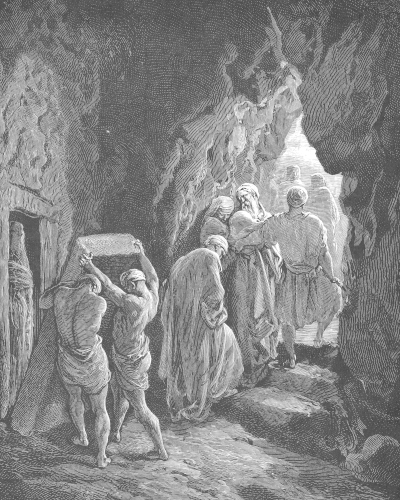The Burial of Sarah is a sombre piece from 1866 by French illustrator, Gustave Doré. It was a part of a major series of works that he produced to illustrate The Holy Bible.
Doré became regarded as the foremost book illustrator in France during the mid to late 19th century and he would receive some notable commission across the 1860s and 1870s. He courted both British and French publishers, taking advantage of the improved literacy rates in both countries which increased the market for books. He tended to focus on classic literature from previous centuries, but also took on The Holy Bible for this notable commission. He chose several key moments and provided illustrations that would accompany the text, and featured scenes from both the Old and New Testament. They would provide some of his most memorable artworks, from a career which amassed around 10,000 items, just in illustrations alone. He would also impress as a painter and sculptor too, underlining his versatility and curiosity as an artist.
Within The Burial of Sarah we see a number of figures mourning the death of Sarah and her burial is prepared. One elderly man looks particularly upset as he turns his head towards the body as it is laid to rest. He is led away, through an opening, alongside other fellow mourners. Several steps lead up towards bright light, representing the outside as they leave the body behind for the last time. Much detail is added by the artist in the clothing which helps to represent the different statuses of these figures, with the labourers on the left without the same attire as the gentlemen wandering off to the right. Light and dark tones also help to bring contrast here, with no colour tones as such used within this monotone format. Doré was a master of these techniques and generated a large income by taking on commissions such as this, although he also desired acceptance in other mediums which never quite came to the same levels.
The Burial of Sarah remains a famous episode within the history of Christianity and was perhaps an obvious choice for this Romanticist artist to include. He would have been attracted to this project because of the incredible stories featured within the Bible that capture one's emotions. It may have taken him quite some time to decide upon which stories to feature, because of the array of potential topics found within this extraordinary piece of literature. The engraving would have been developed by others, under his supervision, before the printing process could take place. Pisan is written in the bottom right corner of the engraving, which represents the identity of the lead engraver on this project.




